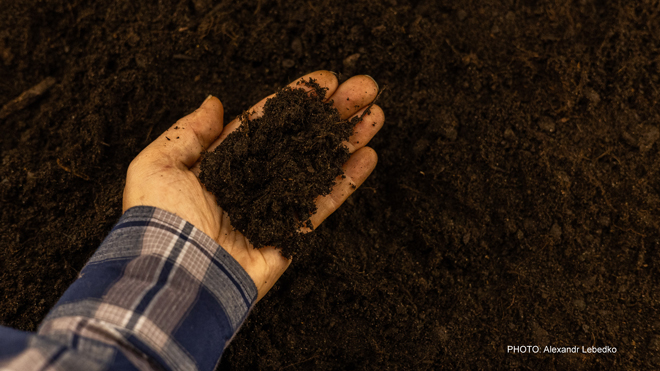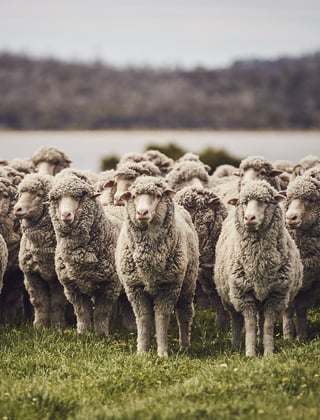More proof of wool’s biodegradability

The results of recent AWI-funded research into the biodegradability of different fibre types in industrial composting conditions were published in June in a peer-reviewed journal, adding to the growing body of scientific evidence proving wool’s eco-credentials.
AWI-funded research shows that machine-washable wool fibres as well as untreated wool fibres readily biodegrade in industrial composting conditions, in contrast to synthetic fibres that do not. The results also show that the Hercosett resin used as part of the machine-washable wool treatment does not create microplastic pollution under composting conditions.
The results of this research, undertaken by AgResearch in accordance with an established standard test method, were published in June in a peer-reviewed journal, adding extra credibility and access to the research.
These positive results regarding the biodegradability of wool in the terrestrial (land) environment are in addition to the positive results regarding the biodegradability of wool in the marine environment that were reported in the June edition of Beyond the Bale.
Although wool has been informally demonstrated on many previous occasions to biodegrade readily when buried in soil, the advantage of this new study using industrial composting conditions is that it was undertaken in a strictly controlled environment. This enabled accurate quantification of the rate of biodegradation and the potential to examine residues.
The samples used in the study were sourced from comparable lightweight base-layer fabrics, made from the six fibre types being studied: two types of Merino wool (machine washable wool and untreated wool), viscose rayon, and three synthetic fibres: polyester, nylon and polypropylene.
The results of the study showed that both types of wool readily biodegraded, as did the cellulose-based viscose rayon. Synthetic fibres did not biodegrade at all. Significantly, the scientists did not detect any formation of microplastic polyamide fragments resulting from the biodegradation of machine-washable wool. The polyamide resin used in the machine-wash treatment (Hercosett) for wool is very different from common commercial polyamides.
The results of the research were published in June in an open access paper (available free on the internet) titled Biodegradation behavior of wool and other textile fibers in aerobic composting conditions in the International Journal of Environmental Science and Technology.
“This work has increased our understanding of the biodegradability of wool by accurately validating its behaviour in composting conditions, which adds to our existing knowledge of the fibre during soil burial and in the marine environment. Wool is durable when in use, but degrades readily at the end of its life when it is disposed of and does not contribute to microplastic pollution,” said AWI Program Manager, Fibre Advocacy & Eco Credentials, Angus Ireland.
“The study adds to the growing body of scientific evidence that recommends an increased use of natural, non-synthetic materials, such as wool, in global textile markets.”
- Angus Ireland, AWI Program Manager
The research forms part of AWI’s broader efforts to more completely account for the impacts of textiles across all life stages in environmental rating schemes such as the European Union’s Product Environmental Footprint (PEF) for apparel and footwear.
“Natural fibres such as wool readily biodegrade and consequently don’t amass in the environment. This important difference between natural and synthetic fibres needs to be properly accounted for in the PEF methodology for it to be more credible and scientifically defensible,” Angus added.
Aussie Wool Pellets – a new market for broad wool
Fifth generation farmer and wool classer Sherri Symons from Ellerslie in south west Victoria last year launched Aussie Wool Pellets, which are biodegradable, slow-release fertiliser pellets made from raw, broad wool.
Developed for a variety of uses within the gardening market (such as in flower beds, vegetable plots, lawns, potted plants), Sherri set up the business to add value to the broad micron wool from her family’s composite flock. She produces the pellets on the farm using a specially designed pellet mill.
Taking full advantage of wool’s biodegradability, the pellets fully decompose over 6 to 12 months and release valuable nutrients such as nitrogen, potassium and carbon into the soil, as a natural and organic fertiliser. The wool pellets’ other benefits include being able to hold three times their own weight in water and therefore helping retain water within the soil, being a slug and snail deterrent, and helping aerate the soil.
In 2023, Sherri won an accelerator program called ‘The Ideas Place’, run by local councils and backed by LaunchVic. The program is designed to help entrepreneurs start and build their business. Sherri was also a double winner at the 2023 Sheepvention Invention Competition, winning both the House & Garden Class and the J. Nagorcka Memorial Award.
More information: www.aussiewoolpellets.com.au
This article appeared in the September 2024 edition of AWI’s Beyond the Bale magazine. Reproduction of the article is encouraged.














